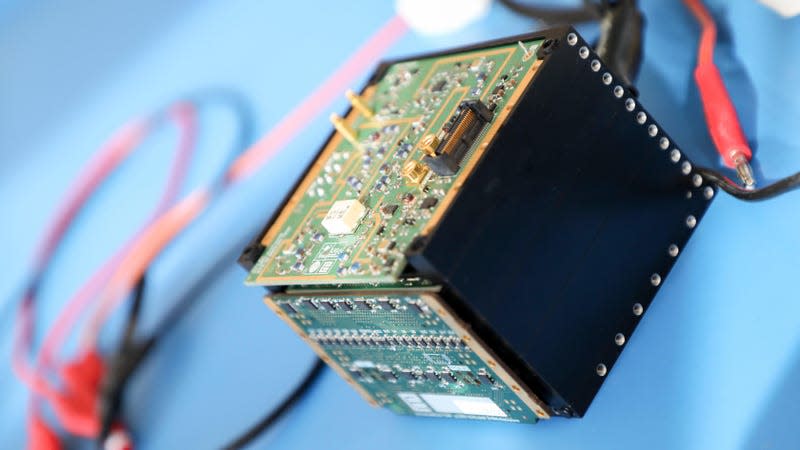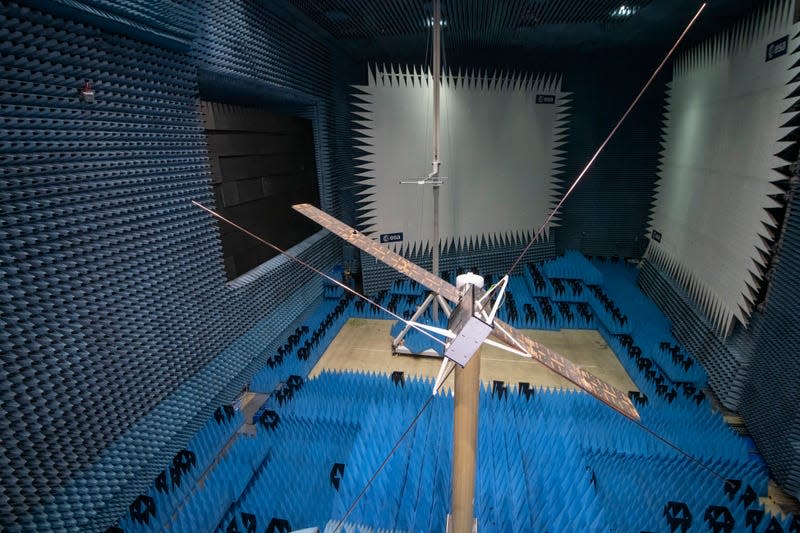This High-Tech Cube Will Visit the Asteroid Smashed by NASA's DART Spacecraft

In the aftermath of the astounding plan to move a harmless asteroid with NASA’s DART mission, further science is needed to determine exactly what kind of impact humanity had on the distant Dimorphos. ESA’s Hera mission aims to do just that with its launch in two years, and it will be bringing along a scrappy sidekick in the form of a tiny radar.
The European Space Agency is calling the cubic radar JuRa, named after the Juventas cubesat to be packed aboard Hera. JuRa is 4-inch (10-centimeter) box that will be hitching a ride on the Juventas CubeSat as Hera visits the post-DART Dimorphos-Didymos system in a few years.
Read more
Details in today’s ESA blog post are sparse on the cube’s specific mission, but the agency wrote that JuRa is a miniature version of a probe previously used to study a comet’s surface during the Rosetta mission, which launched in 2004. ESA says that JuRa will break two records as the smallest radar instrument to be flown into space as well as the first radar to probe the interior of an asteroid.

Juventas is one of Hera’s shoebox-sized sidekicks on its mission to visit the scene of the NASA’s collision, the other being a CubeSat named Milani. Juventas will perform geophysical analyses of Dimorphos by measuring the asteroid’s gravity field and internal structure. Milani, on the other hand, will perform spectral analyses of Dimorphos to characterize the asteroid’s composition by studying any lingering dust clouds, in addition to evaluating the effects of the DART impact.
NASA’s Double Asteroid Redirection Test smashed a spacecraft into Dimorphos, the junior member of the binary asteroid system, on September 26, shortening its orbital trajectory around Didymos. Dimorphos’s orbital period around Didymos changed from 11 hours and 55 minutes to 11 hours and 23 minutes, an adjustment of 32 minutes. In terms of movement, that amounts to a few several dozen feet. It’s a promising start to the development of an effective planetary defense strategy against threatening asteroids, but there’s much to learn about the DART experiment. Hence the upcoming Hera mission.
Hera’s goal is to characterize any further changes in Dimporphos’ orbital trajectory, in addition to gathering surface and internal characteristic data on Dimorphos and Didymos using Milani, Juventas, and JuRa. The mission is scheduled to launch in October 2024 and should rendezvous with Dimorphos in December 2026.
More: NASA Engineers Are Building an Ingenious Heat Shield That Inflates in Space
More from Gizmodo
The Best Shortcuts On Mac: Snap Windows, Text to Speech, and More
How to Delete Your Twitter Account If Elon Musk Was Your Last Straw
Sign up for Gizmodo's Newsletter. For the latest news, Facebook, Twitter and Instagram.

